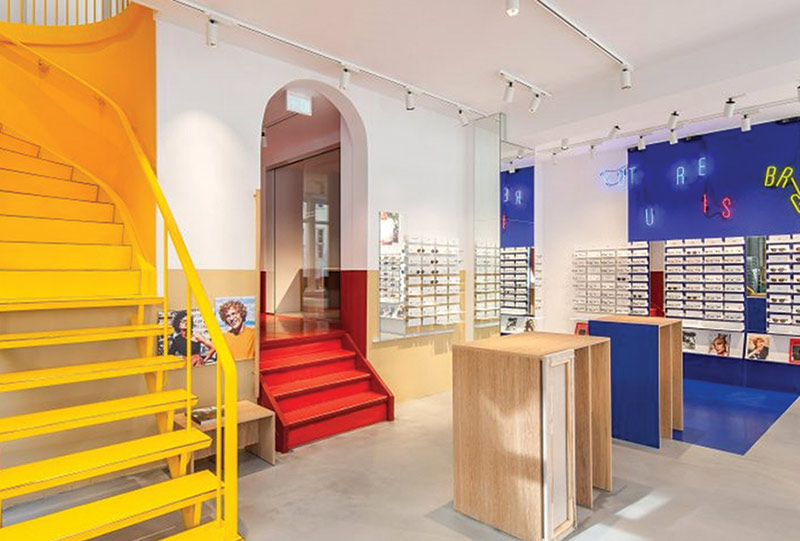
By Linda Conlin, ABOC, NCLEC
We all enjoy walking into a shop in which we can see what it has to offer in an elegant, attractive way. Just being there can put us in an upbeat frame of mind. How can we design our optical shops to convey that mood? It’s easy when you know the basic principles.
There are four things patients want when they’re shopping for eyewear—product that is easily seen, touchable and accessible; the right number of choices; and clear visual clues to price and value. Compared with other products we shop for, eyewear is small with detail, like jewelry, so displays must invite people to come closer.
When considering display design, it’s important to know that when entering a store, people naturally scan horizontally to determine points of interest, then vertically at the showcase that attracted them. In keeping with this, merchandise displayed at eye level 4 to 5 feet from the floor sells best. Second best is “touch level,” 3 to 4 feet from the floor. Place the eyewear that’s best for you to sell in those areas. Place graphics in higher, hard to reach areas. Remember that shoppers don’t like to bend down, so use lower areas for cabinetry and storage. But if you need to use lower areas for display, raise the frames using pedestals or for bright point-of-purchase (POP) materials.
Frames in showcases display well on risers, using the pyramid principle. That is, one frame at the top of the display with others cascading down. Lift frames or stand them opened rather than folded, lying flat. Keep displays somewhat asymmetrical with an odd number of frames. Asymmetry is more visually interesting and keeps the eye moving. It’s also effective to “repeat the message” by arranging frames of the same style but different sizes and colors positioned in the same way. This sends a message of selection, but don’t crowd luxury brands. A crowded display gives a “bargain table” impression. Mirrors used in displays can cause confusion for the viewer, and metal display materials shouldn’t be used because they interfere with the contrast of frame colors.
Frameboards should have white or off-white backgrounds to enhance frame colors and details. The exception is rimless frames, which will disappear on white. A black background or luxurious drape or cloth shows rimless frames like fine crystal. Lighting should come from the top of the display and illuminate frame fronts. LED lighting of 3,000 K to 3,500 K provides good illumination without being harsh or emitting heat that can damage frames.
Break up the perceived monotony of frameboards using small shelves to hold POP. If the lines on display also have sunglasses, place a few of those on the board, too. You also can glaze some frames with fashion tinted or sun lenses for added visual interest. Display low to moderately priced frames on frameboards, and use showcases for luxury brands, keeping collections together. A great way to utilize a frameboard is to create a themed “showcase board.” Showcase a single line or a variety of product with a similar theme such as “new arrivals,” sport or children’s eyewear. Change the showcase every month and vary the themes.
Think about what people quickly see through the front window. Usually, it’s the back wall. Use that space for images and product to attract attention. No one wants to see file cabinets, desks and office equipment when they’re shopping. If possible, keep the reception desk off to the side, or at least completely uncluttered. At the same time, while you want your front windows to invite people in, displays should be simple without blocking viewing access to the interior. Window displays should be changed regularly for a fresh, new look.
A selection of accessories is not only pretty and practical, it adds interest to displays and an opportunity for impulse purchases. From chains and specialty cases to cleaners and eye-themed merchandise, great selections can be found from many vendors. Check with frame reps for these items, too, and many offer attractive display materials such as display cases, decorative pieces and risers as well as POP, often at no charge.
Take a good look around and decide the message you want to send to patients as compared with the message you currently send. You don’t have to do it on your own. Utilize professional design services to transform retail environments into an inviting space with modern displays and merchandising that can even include digital displays for the omnichannel modern experience. However you choose to design your dispensary, remember that less is more. Using elegant simplicity lets frames speak for themselves and enhances the patient experience.













